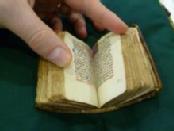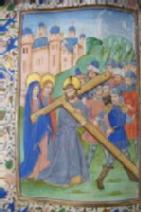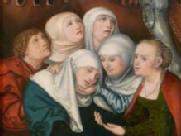Stephen Bates
I am a doctoral candidate at the University of Warwick. My research concerns the place of the Virgin Mary in early Reformation England. In particular, I am analysing the way contemporary scholars understood her, her subsequent representation and the way ordinary people in the parishes experienced her: Mary was a polyvalent symbol at the beginning of the sixteenth century and a touchstone of orthodoxy. As a result, re-imagining her became a significant objective of those seeking to reform the church, both Catholic and Protestant.
Although I am affiliated with the History Department, my research interest overlaps with the objectives of Warwick’s Centre for the Study of the Renaissance, a movement which represents the intellectual and cultural milieu in which sixteenth-century English religious change took place. Consequently I have had considerable interaction with the Centre throughout my period of study and, at the beginning of my third year, sought to take advantage of their position as a member institution of the Center for Renaissance Studies Consortium in applying to attend the Newberry’s 2012 Multidisciplinary Graduate Student Conference. I saw this as an opportunity to expose some of my thesis to a broad graduate audience, to do some archival research at the Newberry Library, and also to experience Chicago, having never travelled to the United States previously.
There was significant competition to present at the conference, with over ninety abstracts submitted, and I was therefore delighted to find the organising panel had selected my paper. I was also pleased to find that, as a representative of a consortium institution I was entitled to a stipend covering travel, accommodation and subsistence: frankly, I would not have been able to make the trip without this financial support. The Center went even further and were extremely helpful in arranging flights and hotel on my behalf.
The paper itself examined the early works of Erasmus to demonstrate that he was comfortable with contributing prayers and poems to the corpus of orthodox late medieval devotions to the Virgin. Only elaborations drawn from classical mythology to praise her in the new rhetorical style, as a Diana or Lucina, constituted innovation. It demonstrated that his later works, in stark contrast, exhibited an increasingly satirical view of popular piety, particularly its Marian aspect, culminating in the 1526 edition of his Colloquies and a consequent repositioning of the place of the Mother of God in both theology and praxis. I suggested that English Reformers subsequently appropriated the Erasmian re-imagination of the Virgin, which became a significant influence over a larger set of transformations, prior to the dissolution of shrines. The paper was well received and prompted useful comment and some interesting questions, and I was proud to have it subsequently selected as one of just fourteen included in the online conference proceedings publication.
As well as a diverse and often fascinating set of presentations, the conference created considerable space for networking and I was able to meet delegates from as far afield as Tulane University, New Orleans, also working on aspects of Marian devotion. The Newberry hosted a dinner at the end of the first day together with a presentation by the Shakespeare project of Chicago, ‘My Name is Will’. This adaptation of thirty-five of Shakespeare’s sonnets, together with songs from eight of his plays all set to original music, produced a lively narrative that demonstrated several of the bard’s themes in a vivid manner. The Newberry’s hospitality continued the following evening with a wine reception.
While the conference programme was fairly demanding, I did escape one afternoon session to play in the archive. The Newberry’s reference librarians had given a tour to orientate delegates on how to use their resources and I was aware of their rich manuscript and early book collections. Much of my research utilises online databases, such as EEBO, so this was a particularly valuable opportunity to engage with physical documents such as their books of hours and printed primers. It is always quite moving to handle objects that at one time were themselves sacred as the focus of personal piety. I had particular pleasure at looking through a miniature fifteenth-century breviary, but the Virgin’s surreptitious assistance in carrying the cross in one illuminated manuscript has helped reinforce my thesis on the late medieval trend towards appropriating the passion.
After the conference I spent an afternoon at Chicago’s Art Institute and was pleased to find a number of representations of the Virgin contemporary to my period of study, including paintings by Rogier van der Weyden and Sandro Botticelli and woodcuts by Albrecht Dürer. This was an added boon to my sojourn and I was particularly appreciative of the Virgin’s swoon in a Crucifixion by Lucas Cranach from 1538, which again reflects the trajectory of continental Mariology and contrasts with contemporaneous developments in England. I was also able to meet up with new friends for one final meal before we all travelled our separate ways, where we were able to speculate on future interdisciplinary conferences on the Virgin! These discussions have greatly enriched my thinking and underscore the potential value of the conference as a networking tool to build collaborative relationships for early career researchers.
I am extremely grateful to the Centre for the Study of the Renaissance for giving me this opportunity and to the staff of the Newberry Library for their wonderful hospitality, and would particularly like to thank Jayne Brown, Penny Roberts, Tia Parks, Laura Aydelotte and Karen Christianson for all they did in facilitating this wonderful experience.
If you would like to read more about my reasearch, please visit my ePortfolio.


MS 53.1 (c.1490)

MS 35 (c.1455)

